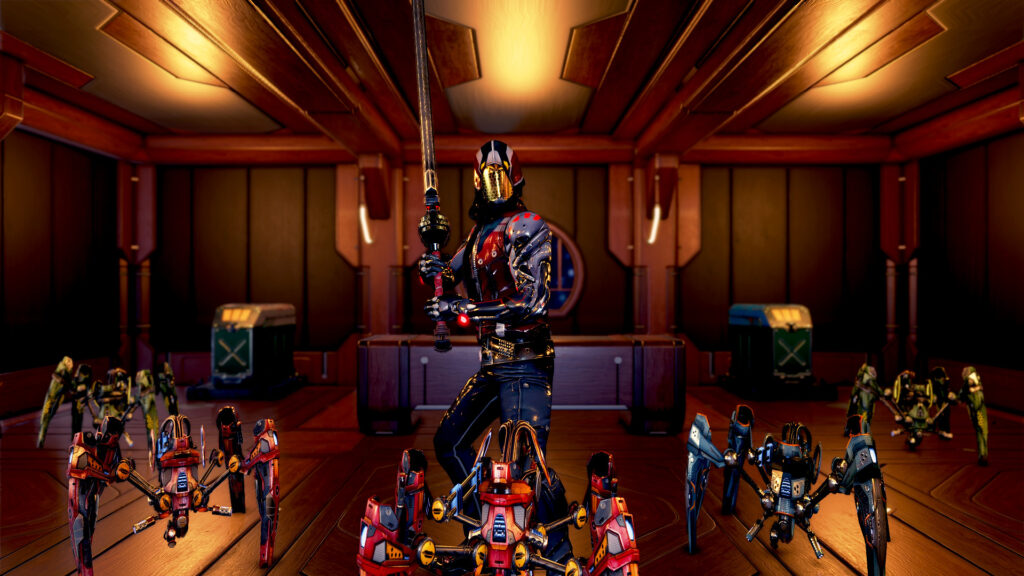
Conglomerate 451 is a cyberpunk-themed dungeon crawler with some roguelite elements, that left Early Access towards the end of February. It was actually meant to release last year, but was delayed a few months to address some issues that arose based on community feedback. While the extra development time no doubt helped, the end result is still very rough around the edges.
Conglomerate 451
Developer: RuneHeads
Publisher: 1C Entertainment
Platforms: Windows PC (Reviewed), Linux, Mac
Release Date: February 20th, 2020
Players: 1
Price: $19.99
Like most cyberpunk games, Conglomerate 451 is set in a futuristic, dystopian megacity ruled by massive corporations with dubious ethical standards.
The game focuses on Sector 451, a lawless district even by the city’s usual standards. Four rogue megacorporations battle for control of the area, using whatever underhanded means necessary to gain an edge over the competition.
That is where you come in. The Senate has tasked your fledgling private security company with disrupting the corporate warfare destabilizing Sector 451 before it spills out into other sectors.
Your benefactors have even authorized the use of vat-grown combat clones, a technology that is otherwise illegal, in your mission to bring down the corporations.
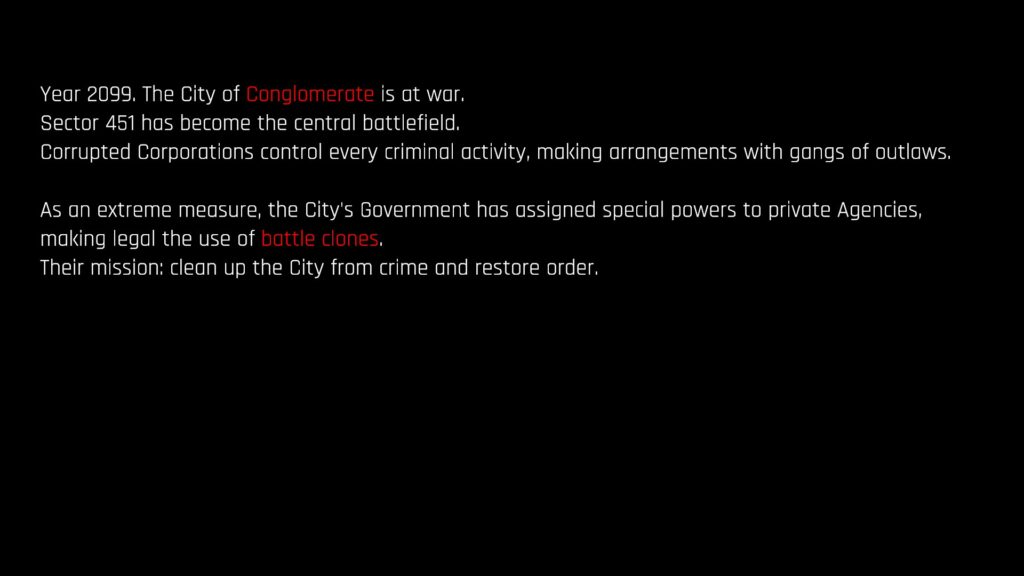
The game is set across 75 weeks, during which time you will accept missions that target specific corporations. Your overall goal is to reduce each company’s influence enough so that you can launch an assassination mission against their boss.
While dismantling the four megacorporations is your primary objective, there are several side stories that appear throughout the campaign.
Ultimately though, Conglomerate 451‘s story is bland and forgettable, serving mostly as a vehicle to drive you from dungeon to dungeon. If you are looking for a heavily story-driven cyberpunk experience that tackles a bunch of the themes normally associated with the genre, then you really won’t find that here.
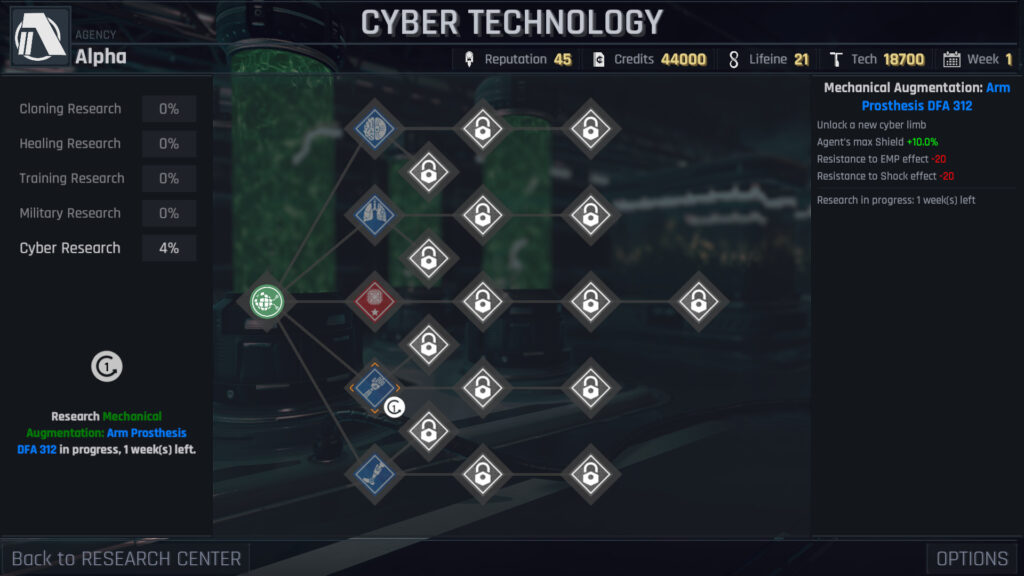
The game’s focus is primarily on the dungeon crawling, and the metagame that allows you to tackle increasingly difficult dungeons. Speaking of the metagame, there is a ton of stuff to do at your base to get your clones prepared for missions.
The base management itself is mostly centered around researching new technology. There are five tech trees, which include Cloning Research, Healing Research, Military Research, Training Research, and Cyber Research. Each of these tech trees unlock new technologies you can use to improve your clone army.
The Cloning Research tree allows you to create new genetic strains that can be applied to a character during the cloning process. For example, you can make your clone more resistant to status effects, or have a larger base health pool.
Healing Research is all about keeping your characters healthy. Not only does the game feature permadeath, but your clones can develop physical and mental trauma on missions. Healing Research allows you to reverse these traumas by sending your clones to healing tanks for a few weeks. There is even a late game technology that gives you a chance to clone a fallen character.
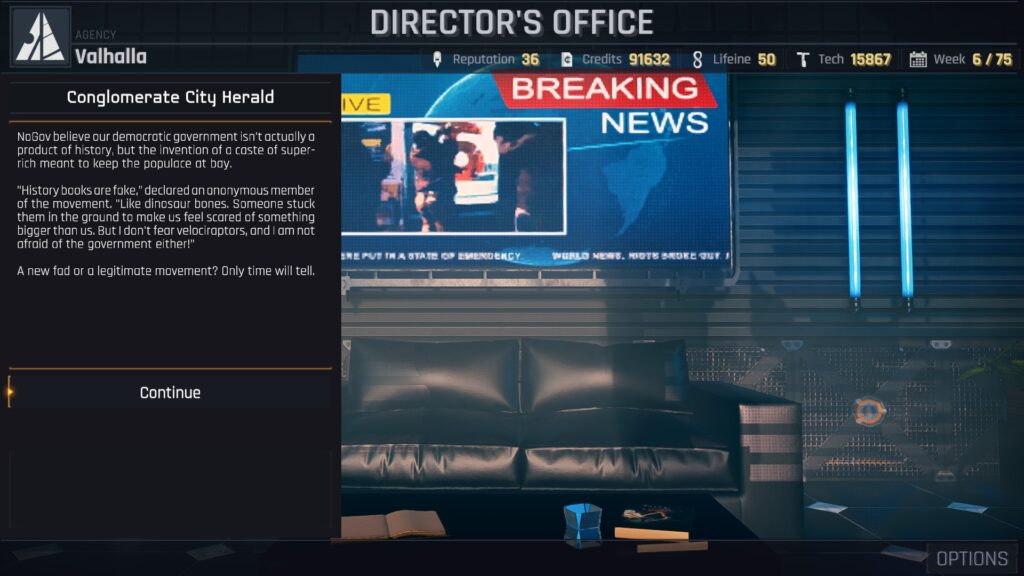
The final three are focused on upgrading your clones in different ways. For example, Military Research allows you to upgrade weapons, while Cyber Research unlocks new body implants you can use to augment your clones’ natural abilities.
There is a decent amount of depth to both the cloning process, and the progression of your clones. When you decide to make a clone, you start by choosing one of eight classes that cover the usual selection of cyberpunk archetypes.
The Soldier is your generic frontline tank, the Techie comes with a support drone and is better at extracting data chips you find during missions, the Juicer uses combat drugs to pump up their stats at the risk of developing traumas more often, and so on.
Once you have picked your class, you get a chance to choose four skills. Each class has eight skills, and sadly you never actually get more of them. You can upgrade them through research, and your characters will become better at using them as they level up and obtain masteries, but they will never have more than four skills at a time (you can freely swap them at your HQ).
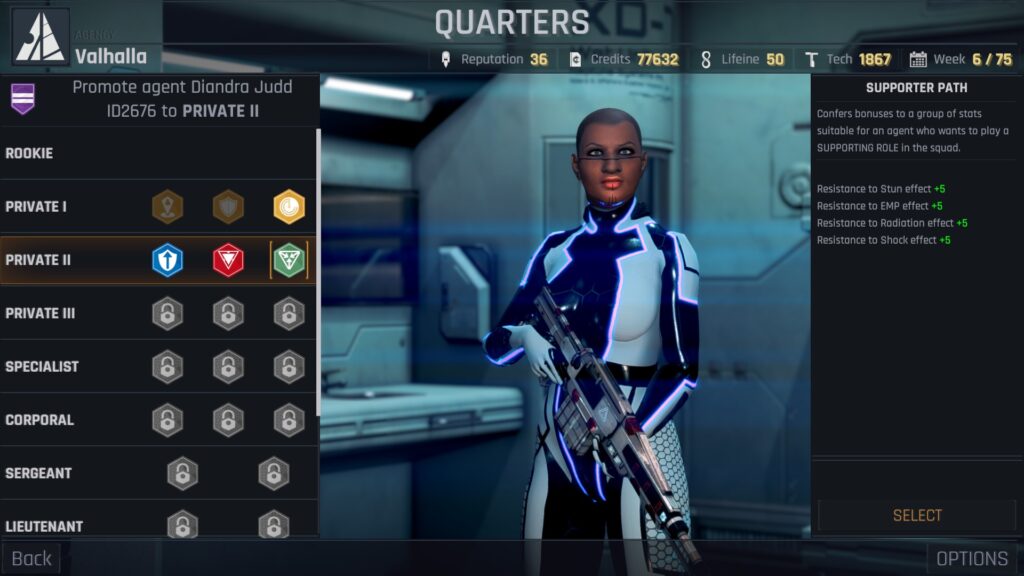
Besides upgrading your skills and base stats through research, your clones get to pick one of three bonuses each time they level up. In general, the bonuses usually revolve around increasing your damage in some way, increasing your resistances, and increasing your survivability.
When it comes to outfitting your characters with gear, Conglomerate 451 takes a different approach than most dungeon crawlers. The gear revolves around SPUs, which are essentially data chips that you slot into your character’s weapons, shields, and augments.
These can be bought at vendors, or found as loot. Most SPUs will give you different bonuses depending on where they are slotted, and the rarer the SPU, the more bonuses they come with.
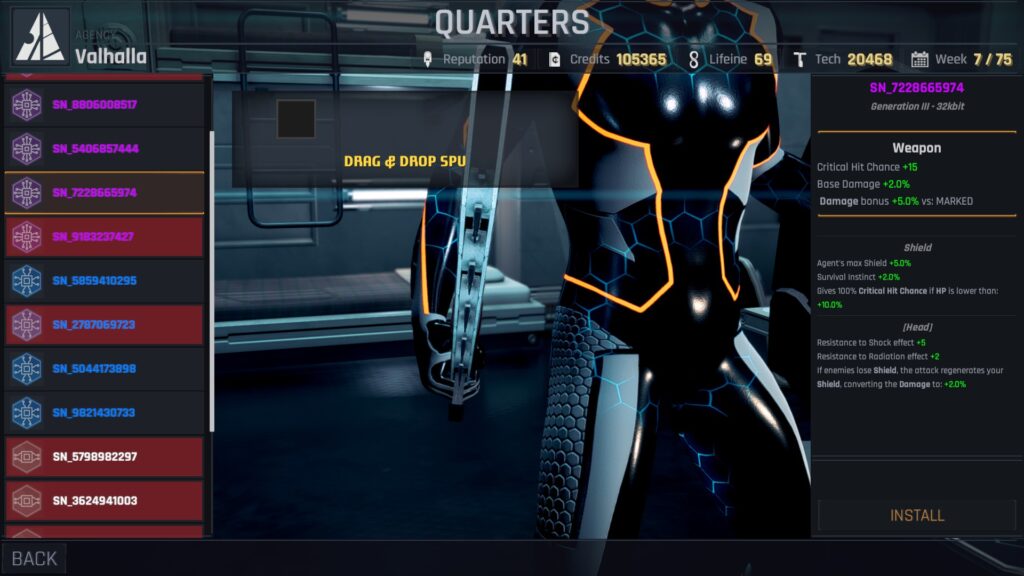
This is where the game’s body augmentation system comes into play. You can augment your characters by adding head, body, arm, and leg implants. These add more slots that you can put SPUs into, but make your clones more susceptible to certain status aliments, like EMP. You can unlock higher quality augments that have more SPU slots through the Cyber Research tree.
While the SPU system is pretty flavorful for the setting, its also a bit bland. In your typical dungeon crawler, an epic loot drop might be a huge sword with a flaming blade, or something equally as visually interesting.
In Conglomerate 451, its a data chip with a name like “SN_8907642137” that gives you a few small stat buffs. Your characters also don’t visually change as you upgrade them. The only real visual customization is a few face presents.
I’m definitely of two minds when it comes to Conglomerate 451‘s character progression overall. There is a lot of tweaking and min-maxing here as you research new technology, install augments, upgrade skills, and so on. There is a ton of stuff to research and improve your characters with. However, they are all done in small increments, like +2% base damage here, or +3% critical chance there.
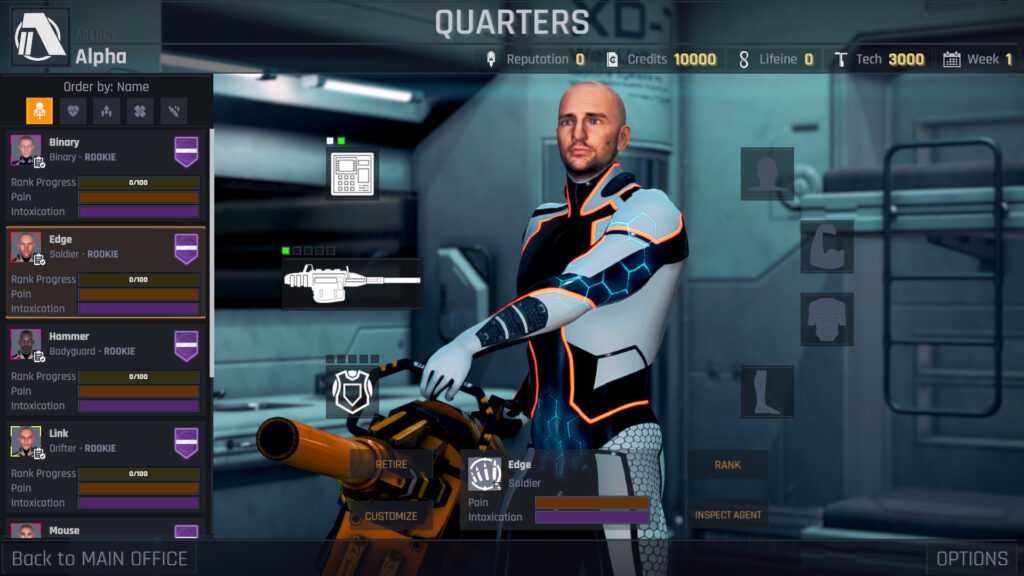
Your characters don’t get noticeably stronger with each new SPU you install, or upgrade you purchase. Conglomerate 451 is all about layering loads of small, seemingly insignificant buffs over time.
If you love crunching numbers, and seeing all those small percentiles increase though, then this game’s character progression will be right up your alley. Personally, I wish you saw more obvious and immediate improvement when upgrading your characters.
Once you are done admiring your spreadsheets of critical chances and radiation resistance buffs, its time to send your clones out on a mission. Each mission takes one in-game week, and you normally have four or five to choose from at a time.
The missions each target a specific corporation, and will reduce that company’s influence if you succeed. There’s a handful of different objectives, ranging from retrieving an item, to killing a specific enemy.
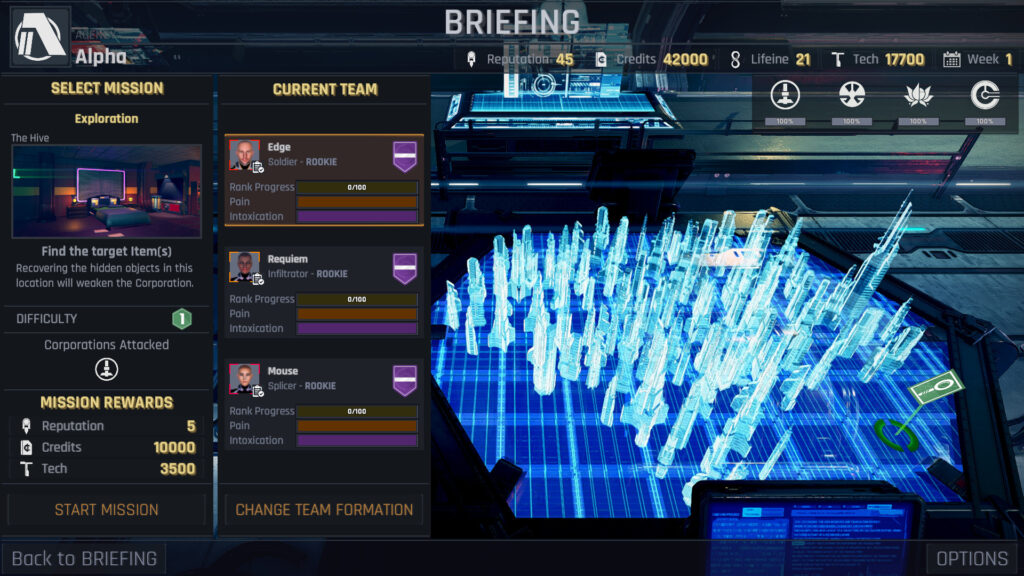
Before you start the mission proper, you can choose to head to the city streets. The streets are a randomly generated hub area with a few weak mobs and various vendors, along with an elevator that will bring you to the mission area itself when you are ready.
Its also a perfect example of one of the many small design decisions that can make Conglomerate 451 tedious at times. Heading to the city before a mission is the only way to get to a vendor to offload all your unwanted junk.
This means that if you find yourself just short of resources to buy some upgrades, you’ll need to start a new mission, go to the city, sell your stuff at the vendors, complete the mission, and then buy the upgrades once you get back. That same mission probably rewarded you with loads of junk items you don’t need, so prepare to do it again.
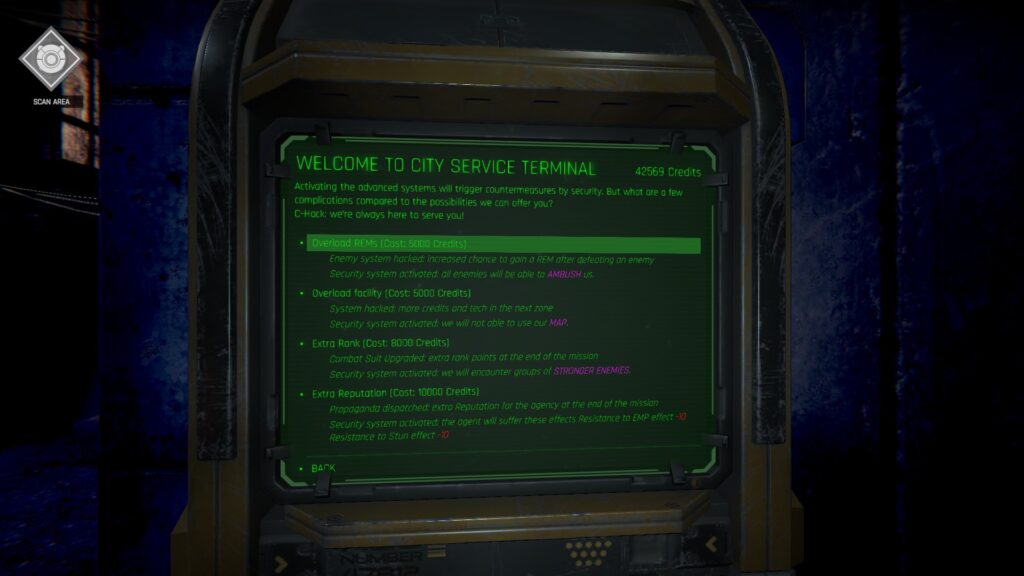
You might be asking why they went with a system like this, and I think it probably comes down to the fact that several vendors offer limited bonus that apply only to the upcoming mission before they expire.
Still, it’s no less irritating when you find yourself just short of resources, but with an inventory full of junk items to offload. I wish they’d cut out the middleman and just let you do a lot of this from HQ instead.
You’ll also want to take this pre-mission pause to turn off the voice quips from the endlessly annoying guide drone that accompanies you.
Imagine if Claptrap had a female voice, and she communicated solely in memes and pop culture references, that are even more tired and dated than the ones in Borderlands. There was a time when turning the drone off wasn’t an option, and I can only imagine how dark those times were.
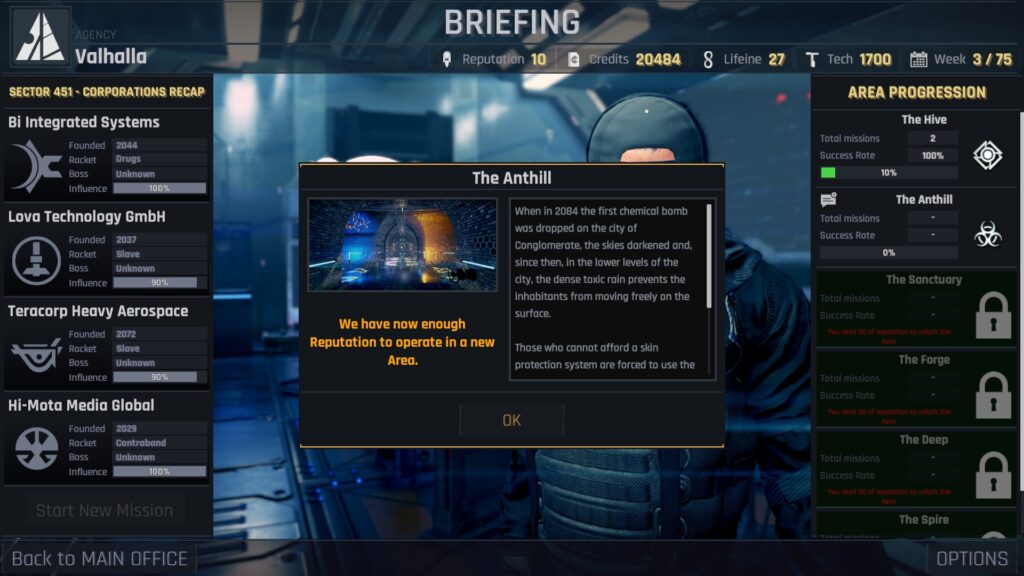
The mission areas themselves are about what you’d expect from a dungeon crawler. The layouts are randomly generated, and each mission usually takes about 15 to 20 minutes to complete. You’ll find chests, computer terminals, and other interactive objects that you can dig through to find loot.
Some of these lead to simple timing-based minigames that you’ll need to overcome to successfully extract some SPUs or unlock a door.
Certain classes are better at these than others, making the minigames easier. In some cases you will just outright need a specific class to do them, like requiring a Techie to extract higher rarities of SPUs from consoles.
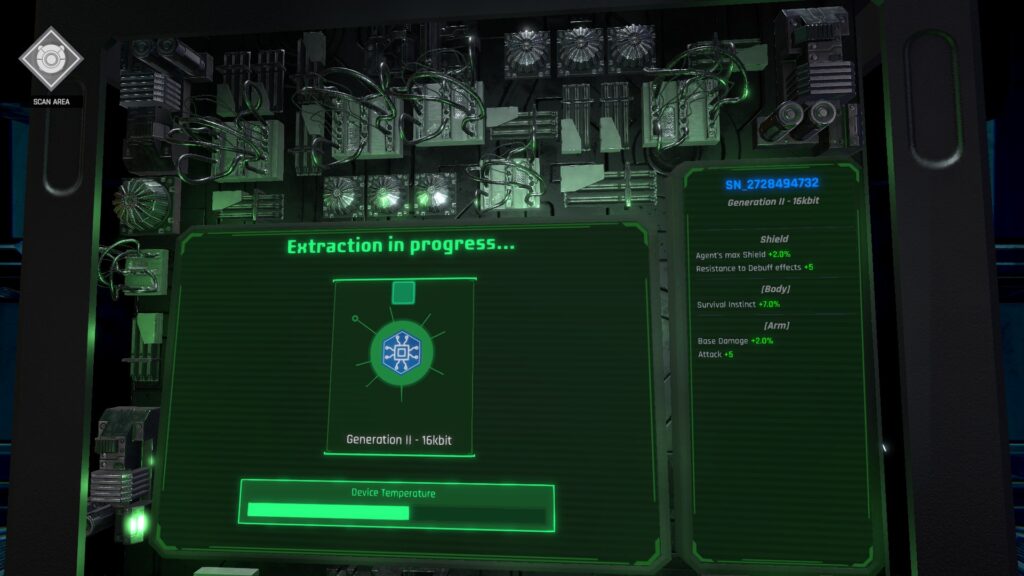
Of course, the dungeons are also populated with mobs of enemies. Combat will start whenever you get too close, leading to the game’s turn-based battles.
You control your whole party from a first-person view, and turn order is based off the initiative of each combatant. Each character’s turn consists of using one of their four skills, and choosing an enemy to target. You can also target the individual body parts of enemies, with each part having a chance to inflict a debuff if you hit.
You can also choose to use up your party’s entire turn to move, but this usually isn’t worth it. Enemies, however, can freely move around however they like. This will often lead to some awkward camera angles as the enemies move all around you.
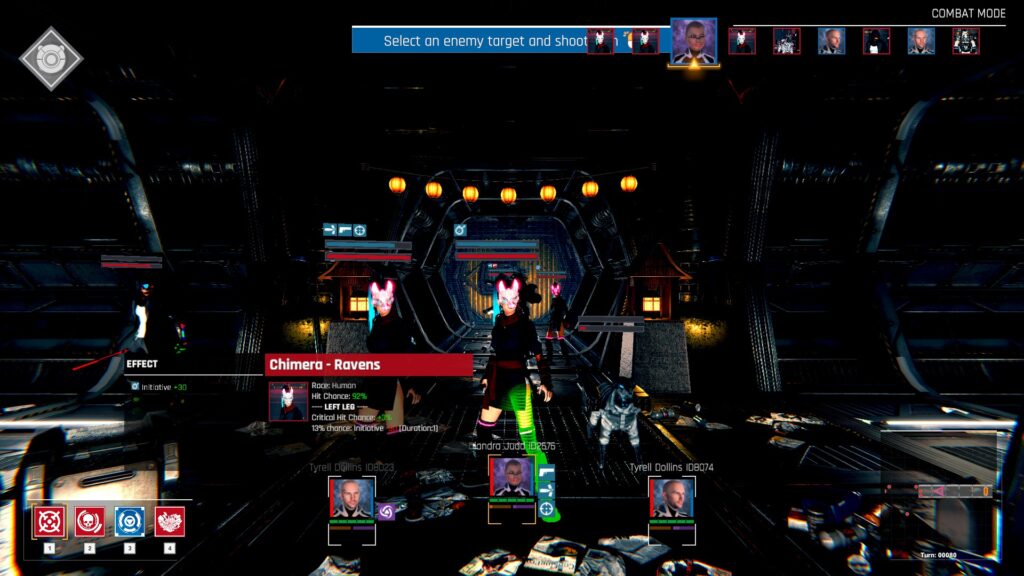
You can freely rotate whenever you want, but the more I think about it, the more I don’t really understand why they took this particular approach to combat over just having two static parties facing off against each other.
There are no back strike bonuses to speak of. The only thing that enemies moving around the battlefield does is potentially disrupt your AOE attacks, but they tend to bunch up most of the time anyway. There are short ranged attacks, but most combat happens close enough that it doesn’t really matter.
Melee enemies in particular can move and attack, so I never really saw the point in trying to kite when I could instead just focus fire. If you could move without it taking up the turns of your entire party, then maybe there would be some level of strategy to exploit here.
It feels like they tried to make positioning and ranges matter originally, but didn’t think about the fact that players control their whole party from first-person. They can’t exploit this, in the same way that a group of three enemies that move individually can.
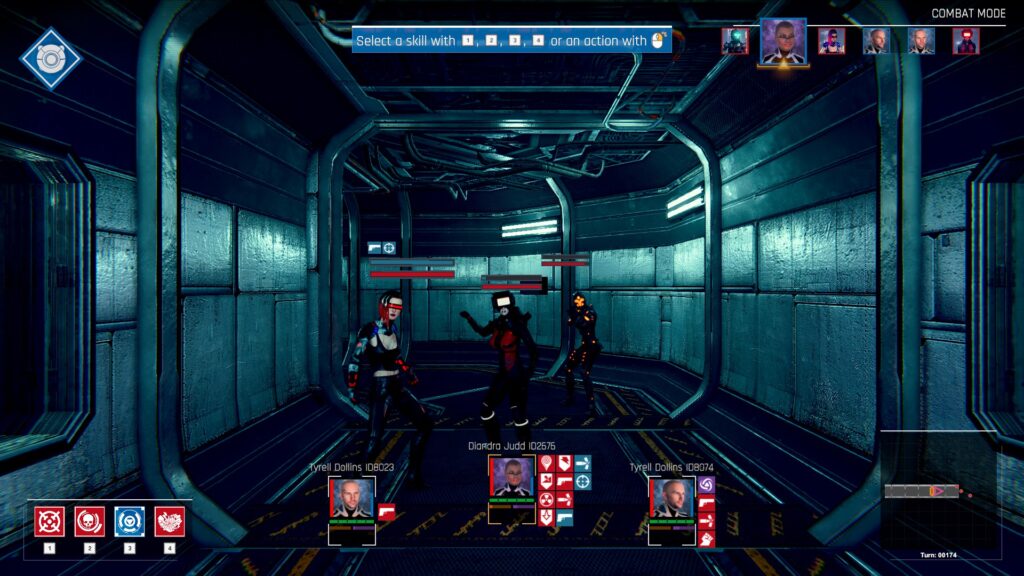
Even though your characters only have four skills each, there is a decent amount of synergy that goes into the game’s combat system. Some skills inflict status aliments, while many other skills benefit from targeting enemies that are under the effects of specific debuffs.
One of the more common examples is Marked, which increases damage against the target. The Sniper class in particular excels at exploiting Marked, and has skills that deal extra damage if the target is affected by it.
There are plenty of support skills and status aliments in the game, too. Each character has a shield that you have to chip through before dealing damage to them, though they are plenty of skills that can bypass shields, or deal a small amount of damage to the target’s health in addition to the shield.
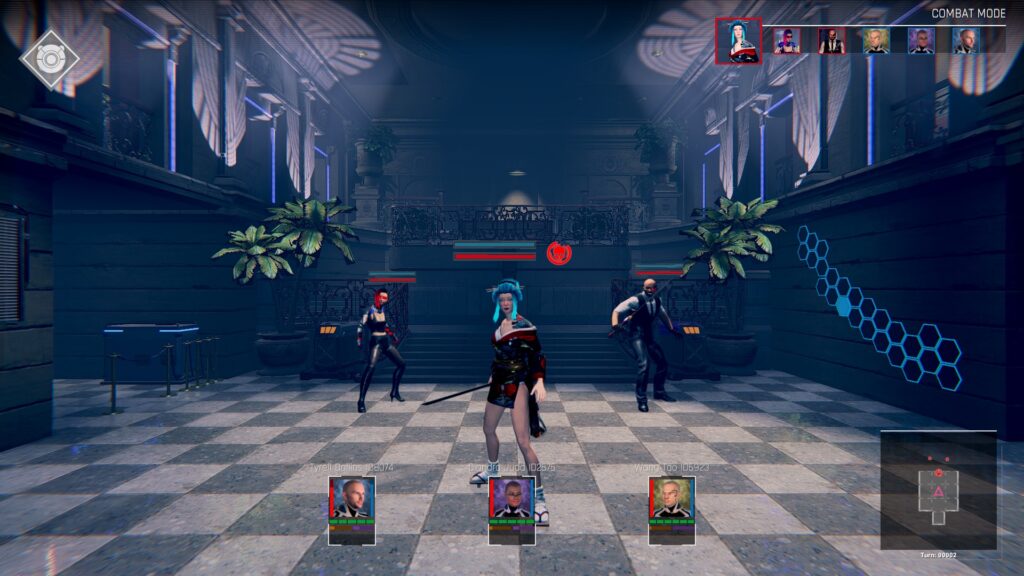
There is a separate menu in combat with some other things your characters can do, most notably the hacking system. Any character can hack, but obviously there are some classes that are better at it than others. You can install different programs into your characters’ hacking devices in a way similar to SPUs.
The most generic hacking program lets you bring up detailed information of your target, but more advanced ones can decrease an enemy’s attack power, defensive stats, or resistances.
Hacking doesn’t take up your turn, but it does consume your clone’s battery. Battery power is a limited resource that will recharge between missions, and acts kind of like a mana bar for the hacking system. Dungeons will typically have one place where you can recharge your batteries once per mission.
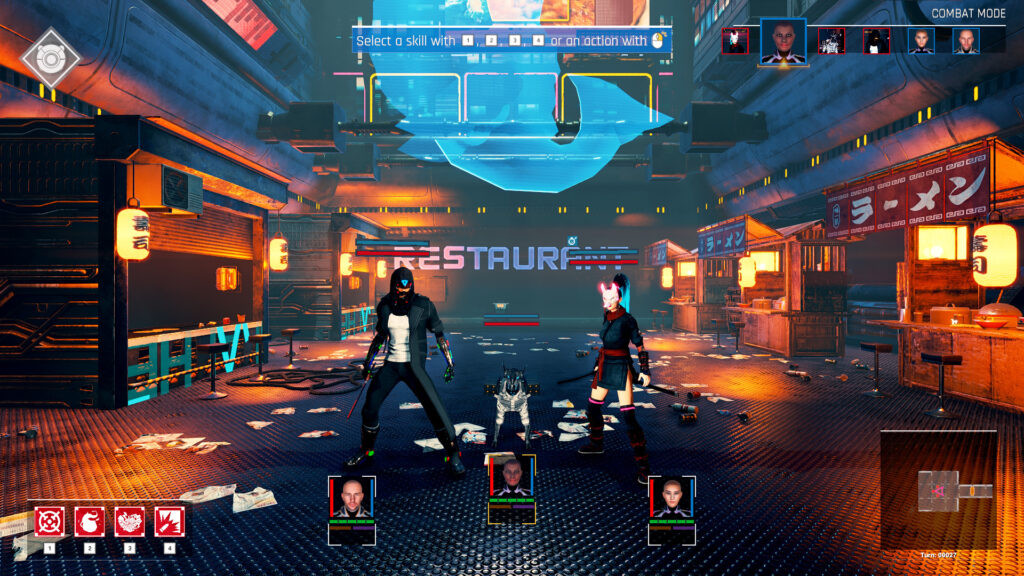
As you’ve probably noticed from the screenshots, the game’s overall presentation is serviceable. The character models for the enemies are largely fine, though your clones look rather uncanny.
The animations and sound effects are about what you’d expect from a game that was made on a tight budget. Some of them are decent, while others are kind of goofy. They also regularly glitch out.
I’ve seen enemies slide across the ground instead of walking before, while other times animations just didn’t play. Hair and flowy bits of costumes like skirts and jackets often clip through character models, resulting in the occasional lithe assassin girl’s miniskirt getting consumed by her legs and nether region.
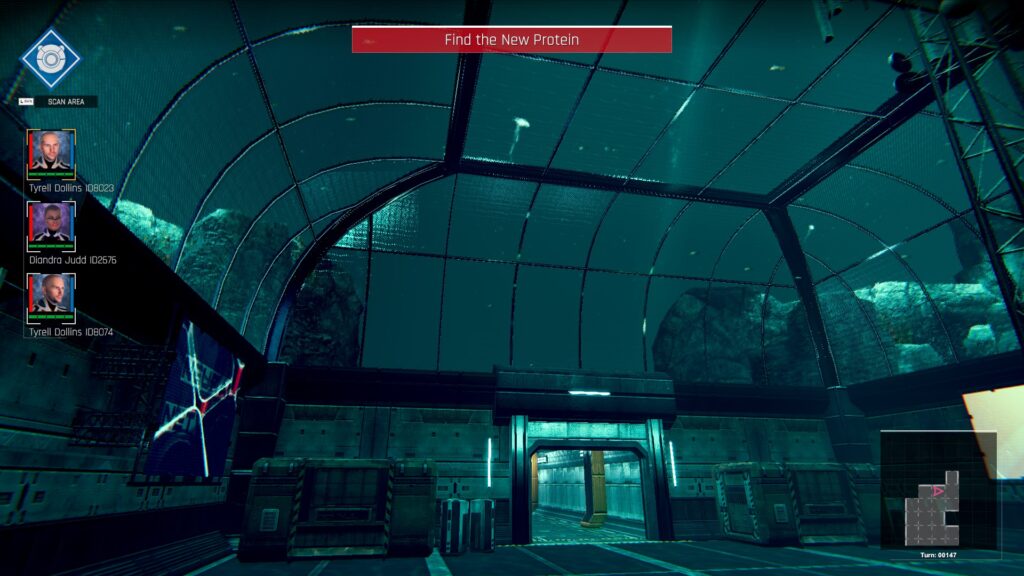
The environments themselves look pretty good. There are five or six regions in Sector 451 that you’ll be exploring, each with their own tile sets.
Unfortunately, the game’s random generation is pretty mediocre. You will be exploring lots of extremely similar maps, to the point that you’ll probably be able to guess where everything will spawn.
The most glaring flaw with Conglomerate 451 overall however, is the game’s campaign structure itself. As I said, the game gives you 75 weeks to bring down the corporations.
On the standard difficulty setting its entirely possible to do this by the halfway point, if not even sooner. When this happens you basically just have to keep playing until week 75, even if you have reduced everyone to 0% influence, and killed their bosses.
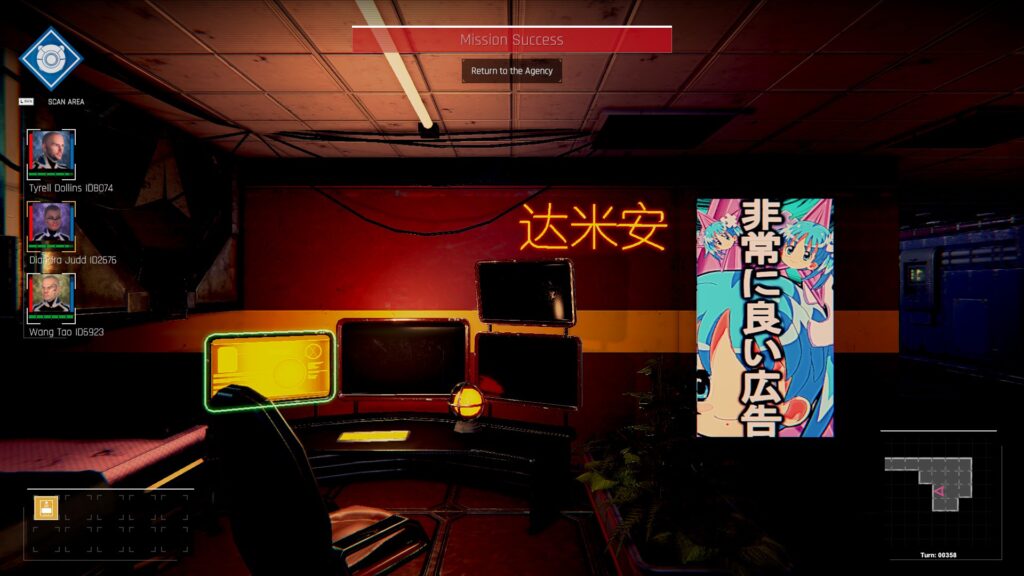
The reason for this is because there are side stories that appear at specific times during the campaign. Unfortunately, if you complete the main objectives early, then you’ll basically just have to keep accepting missions until you hit those specific points.
As you can imagine, this gets extremely tedious, especially because you’ve probably also unlocked everything, and have your favorite clones as upgraded as they are ever going to get.
While I have been fairly negative throughout this review, I wouldn’t say Conglomerate 451 is a bad game. “Serviceable” and “unpolished” are far more accurate descriptions.
It has a good amount of depth to the character progression system, and there are loads of upgrades to research and apply to your characters. Some aspects of the combat are a bit janky, but its otherwise fairly decent. However, the game is littered with unpleasant mechanics and design choices that gradually add up over time.
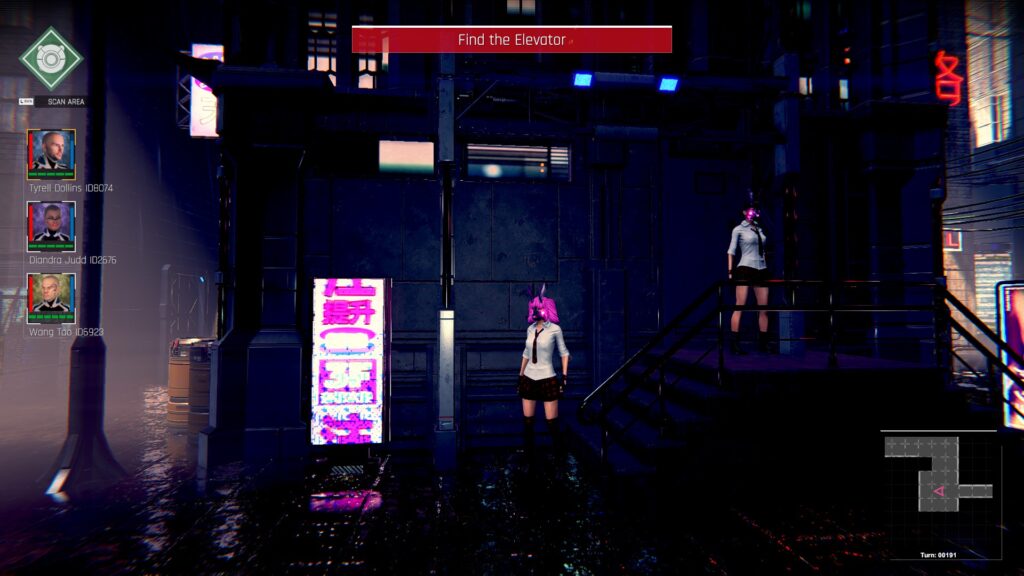
I wanted to really like Conglomerate 451 because its not too often that you see a cyberpunk-themed dungeon crawler. In fact, I was actually having a good amount of fun for the first dozen or so hours, when everything was still fresh and every mission gave me just enough resources to pick some valuable upgrades.
However, as the campaign drags on, the tedium and repetition starts to become increasingly apparent. If you are desperate for a new dungeon crawler, then Conglomerate 451 isn’t exactly a horrible deal.
It has a cheap price, a campaign that will probably take most gamers around 40 hours to complete, and an Endless mode. Just be aware that there are a lot of issues that need to be addressed before it becomes a truly memorable addition to the genre.
Conglomerate 451 was reviewed on Windows PC with a review copy provided by 1C Entertainment. You can find additional information about Niche Gamer’s review/ethics policy here.